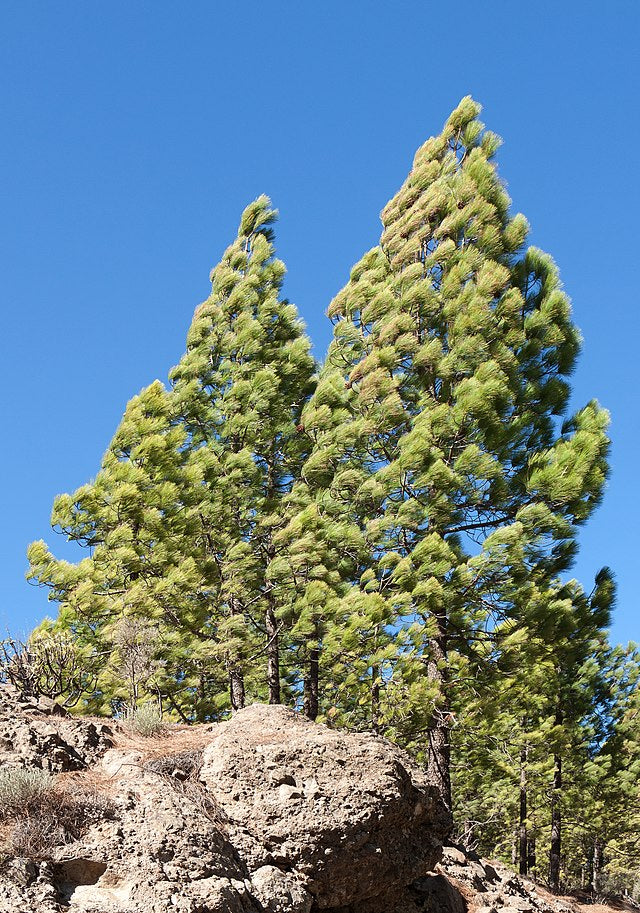Common Name: Canary Island Pine
Description:
The Canary Island Pine (Pinus canariensis) is a tall, evergreen conifer known for its graceful, open canopy and long, slender needles. Native to the Canary Islands, this fast-growing pine features soft, blue-green foliage that cascades in drooping clusters, giving it a feathery appearance. Its reddish-brown bark becomes deeply fissured with age, adding to its ornamental appeal. Well-suited to warm, dry climates, it thrives in well-drained soils and is highly drought-tolerant once established. This hardy, low-maintenance tree is ideal for large gardens, parklands, windbreaks, and reforestation projects. Its resilience, combined with its elegant form, makes it a valuable addition to the Australian landscape.
Form:
- Tree - Large
Mature Size:
- Height: 20–30 m
- Width: 8–12 m
Aspect:
- Full Sun
Flowering:
- Does not flower (produces cones instead)
Flower Colour:
- N/A (produces large, woody cones)
Key Attributes:
- Drought Tolerant Once Established
- Disease Resistant
- Frost Hardy
- Fast Growing
- Suitable for Windbreaks & Reforestation
- Ornamental Bark & Soft Foliage
- Suitable for Large Gardens & Parks
Toxicity:
- Not known to be toxic to humans or animals
Companion Plants:
- Other drought-tolerant conifers such as Cupressus, Cedrus, and Pinus species
- Hardy native shrubs like Callistemon (Bottlebrush) and Leptospermum (Tea Tree)
- Underplanting with grasses such as Lomandra and Dianella for erosion control


